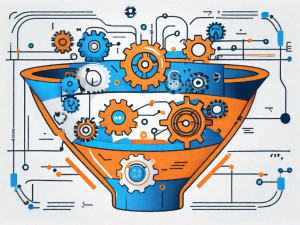You might think you have the best call center and support team in the world. But can you prove it?
Your call center support team is an important part of your omnichannel support strategy. Regularly measuring call center KPIs and evaluating your team’s performance is a good way to establish a standard for future improvement.
Call center managers need to know which key performance indicators (KPIs) are worth measuring and what that information means. When measured and interpreted correctly, call center KPIs, like the ones listed in this article, help businesses determine the effectiveness of their customer service.
5 Call Center KPIs to Know
While there are plenty of metrics that are important to measure, these are the top five to follow to get a good idea of the average performance of your team. We chose these five because they are relatively easy to track, and they all relate to each other and your team. These metrics measure team productivity and efficiency, as well we help call center managers pinpoint areas of success and areas that need attention.
Call Abandonment Rate
The first metric to watch is the rate of abandoned calls. This refers to the number of calls that end with a caller hanging up before the support agent answers. While this metric doesn’t tell you much about the specific agent, it does tell you that your customers might be waiting too long, and are hanging up out of frustration. This can speak volumes to overall agent productivity.
A report from Glance shows that 67% of customers hang up in frustration while waiting for a customer support agent to answer. If the average call abandonment rate is too high, look for problems that affect all of your agents and see why they aren’t able to get to your customers in time.
The team at Tenfold suggests starting the call with ringing rather than going straight to an automated system. This method can help reduce the number of abandoned calls by giving agents more time to finish their current call and move on to the next customer in the queue.
This stage would be the best time to set expectations and be transparent with callers about wait times. If you leave your customers waiting blindly in queues, they will feel that they have been waiting forever. Customers are more likely to wait longer when they know exactly how long they’ll be on hold. (Irisys)
Measuring and improving your team’s call abandonment rate can correlate with team productivity and time management with each caller. If you find your team’s average call abandonment rate is fluctuating, try offering customers approximate wait times or additional communication channels to try.
Speed of Answer
Following your call abandonment metric is the speed of answer. The average speed of answer refers to the average amount of time wherein a customer’s call should be answered. This is a great metric to measure team productivity.
As you can probably imagine, the lower your average speed of answer, the less time your customers are waiting to speak with a customer support representative. A higher number indicated inefficiency and overall poor customer service. This metric affects customer satisfaction as today’s customers need immediate resolutions to be delighted.
In fact, 82% of customers decide to discontinue doing business with a company that provides substandard customer service. Not only is this crucial to achieving high customer satisfaction scores, but lower speed of answer average also lowers the occurrence of abandoned calls while increasing the first call resolution rate.
First Call Resolution
What is first call resolution rate? This simply means your agents get it right the first time. First call resolution is an essential part of managing your call center’s relationship with customers. This metric directly reflects your team’s capability to solve problems, answer questions, and provide needs the very first time a customer calls.
A 2019 survey showed that 60% of call centers track first contact resolution as a KPI. The better a contact center’s first call resolution is, the more successful and efficient they are in providing solutions rather than creating more problems.
How can you improve your team’s first call resolution rate? Provide training that focuses on the most frequent issues, as well as training to aid in familiarization of the current tools, policies, and processes so your agents can provide working solutions to even the most complicated customer problems.
Average Handle Time
Average handling time describes the amount of time that customers spend on each phone call with your team. (Thanks Hubspot!) Call centers wait to aim for a lower handle time average. This indicated their team is efficient and it takes fewer agents to shuffle through your call center queue.
This metric is similar to the first call resolution in that proper training can help to improve this number. When you equip your team with the right information and tools, they are better prepared to help customers.
Interpreting the average handle time should be done tactfully. Do not always take this metric at face value. If your agent’s handle time is longer, it may mean that he or she is struggling with customer requests. Yet, if the agent’s average handle time is too short, it may mean that they aren’t offering any real assistance at all. This is where you might want to use software that offers quality assurance to monitor call quality and make sure your team is performing to your standard.
Customer Satisfaction Score
Customer satisfaction is an obvious and comprehensive way to measure your call center team’s productivity. This call central metric is one of the most important.
Forbes shares a powerful study on customer satisfaction and customer recommendation. The study revealed companies that put in the effort to take their customer experience from average to awesome saw 30-50% increase in the likelihood of the customer recommending the product or services to other consumers.
There are a number of ways to track customer satisfaction, but the most common way is by way of after-call surveys.
As a call center manager, you might already have a good idea of how your team is performing, but following useful metrics like the ones above can help show hard proof you may need to take your team to the next level. By measuring specific call center KPIs, you’ll be able to pinpoint areas of success and areas in need of improvement.
If you’re looking to centralize your KPIs in one place and create a customizable dashboard to share with your team of support agents, our team is here to help!




